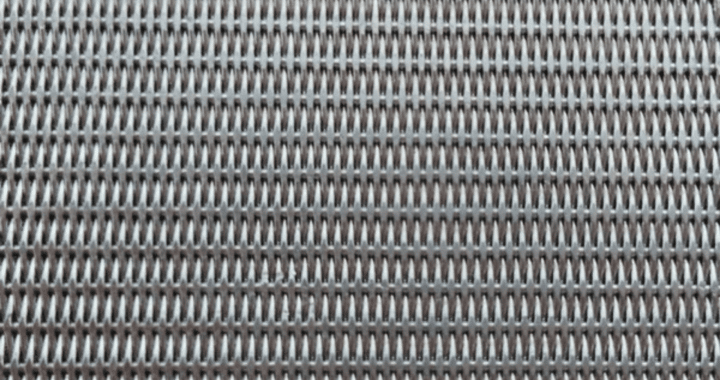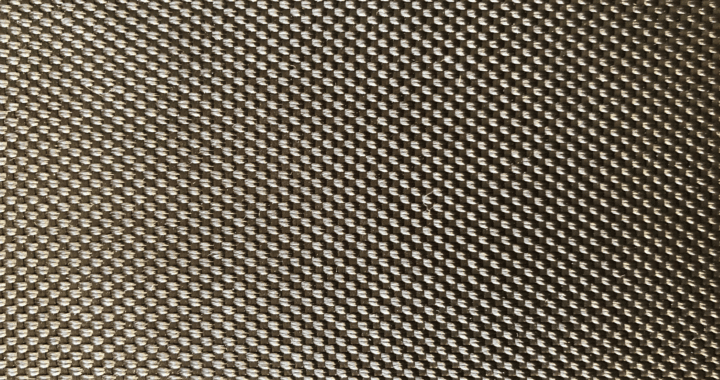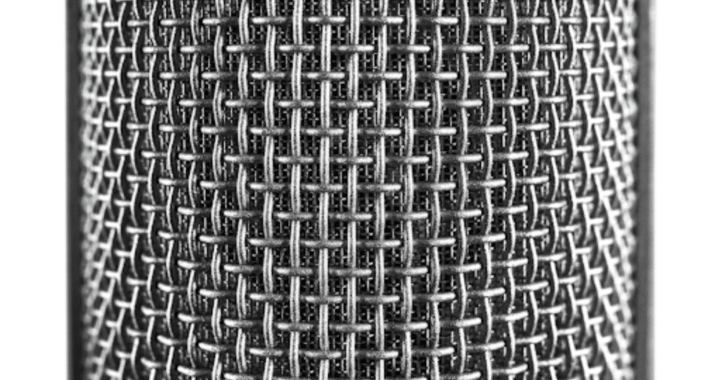Sintered wire cloth is sturdier and offers a clear advantage over non-sintered wire mesh in many ways. It is more durable, more efficient, and eco-friendly due to its washability and reusability. Woven wire mesh can be stacked in multiple layers and molecularly bonded together through the sintering process, which creates a highly controlled and strong permeable material apt for making better filter discs and cut pieces. We offer various types of sintered wire mesh such as 5-layer sintered wire mesh, sintered wire mesh with perforated metal, HASTELLOY® C-22 sintered wire mesh, and many others.
What is Sintering?
Sintering is the process of creating a compact bonding of particles using heat and pressure but without melting them. Thus, sintered metals are coherent, solid structures bonded at the molecular level. Specialized thermal treatment involving isostatic pressure creates a fusion to make a metal part with increased integrity and strength. The finished product is firmly bonded at metal-to-metal contact points without any filler or bonding agent, becoming tougher and more versatile.
How is Sintered Wire Cloth Better Than Regular Wire Cloth?
The quality of sintered wire cloth makes them the best possible choice for wire mesh discs and other wire mesh fabricated filters needing fine filtration capabilities combined with high mechanical strength. Sintered wire cloth, with a combination of different layers of woven wire mesh laminated together, has multiple advantages over non-sintered metal wire mesh. Let’s find out how.
#1. Strength and Durability
Regular wire mesh can filter very fine particles down to 1 Micron, but the finest meshes are also very flimsy, almost like a sheet of paper. They can be easily damaged or destroyed if any significant pressure is applied in a filtering situation, just like being able to easily punch through a piece of paper. Sintering a fine filter mesh together with layers of coarser and stronger woven mesh for support allows you to retain the fine filtration capabilities of the filter mesh combined with the increased strength and pressure resistance of the coarse meshes, all together in a single piece. The sintering heat treatment process also makes the wire cloth ductile, annealed, and formable. It increases the tensile strength as well as thermal and electrical conductivity. This all helps sintered wire cloth retain shapes and hold pleats when used in fabricated filter elements.
#2. No Risk of Wire Migration
The sintering process also firmly locks wires in place as woven and removes any risk of medium migration in a sintered wire cloth. It ensures secure, permanent fusion of mesh wires and inhibits any chance of edge fraying, which is a common concern in non-sintered wire mesh discs and cut pieces.
This allows the cutting of small discs and highly sophisticated filters from sintered wire cloth without any risk of having loose wires. As wires remain fixed and resistant to movement under pressure, the opening size remains stable throughout its service life. Filters with the potential risk of wire migration or fraying under pressure can cause serious failures when used in medical or aircraft hydraulic fluid filtration, so it is absolutely necessary to use sintered wire cloth for these types of applications.
#3. Lamination with Multiple Layers
There are many possible combinations of different wire mesh that can be sintered together to meet the demands of many different applications. A layer of fine filter mesh can be sintered together with one layer of support mesh to provide a bit more rigidity and strength, which is useful in sieve plates, aeration filters, backwashing filters, hydraulic filters, sifters, dust barriers, and cleaning baskets.
A layer of fine filter mesh could be sintered together with two layers of support mesh, either with the filter layer on the surface or sandwiched between the support layers. This is useful for aeration filters, spray dryers, hydraulic valve screens, hydraulic fluid filters, and CIP filters.
A standard 5-layer or 7-layer configuration that we offer with a single filter layer and multiple support layers is commonly used for Nutsche filters, fluidized beds, centrifuges, polymer filtration, and other filtration of thick liquids.
#4. Sophistication, Versatility
Sintered wire cloth is best suited to make highly complex wire mesh discs, bi-directional filters, ion traps, chromatography frits, centrifuges, and valve screens. The process of making sintered mesh enables one to create discs and filters with customized pores, shapes, and sizes.
Even more layers of wire mesh can be sintered together to create laminates that are ¼” thickness or more, which is used in applications for flame arrestors or detonation arrestors.
#5. Specialized Wire Mesh Discs
Pharmaceutical processing and gas sparging require specialized wire mesh discs. These call for high mechanical strength and corrosion resistance that only sintered metals are capable of offering. Thanks to its sturdiness, you can form tailormade wire mesh disc and fabric or substantially deform sintered wire cloth to have deep-drawn molded shapes of any type.
#6. Higher Structural Integrity
Sintered mesh is more rigid and exhibits higher tensile strength. A wire mesh disc or fabric created through sintering can withstand higher pressures and offers greater resistance against deflection. Its uniformity and structural integrity are hard to beat. Wire mesh can also be sintered together with perforated metals to withstand even higher collapse and burst pressures. This type of laminate with wire mesh sintered to perforated metals is useful in applications such as sand control screens in oil wells and sea water filtration on container ships.
Structural integrity enables sintered wire cloth to withstand some pretty harsh conditions. It also assures protection against damage or lateral flow maintains filtration integrity. Non-sintered mesh wires tend to move or migrate under pressure and this may increase the size of pores. But a filter made from sintered metals eliminates any such risk because of its structural strength.
#7. Easier Cleanability and Reusability
Sintered wire cloth doesn’t damage with high-pressure washing or passivation baths. Its high structural strength and excellent surface finish easily withstand furnace firing, solvent cleaning, and ultrasonic cleaning, and can be reused many times over.
Sintered metals represent the high degree of sophistication achieved in metallurgy. The sintering process turns wire mesh fabric into a highly useful class of permeable products. It improves the annealing process while making sintered wire cloth perfect for wide-ranging filtration applications. You get the strongest, corrosion resistant, and easy-to-clean wire mesh that is reusable, efficient, and with very low waste.
Lawrence Sintered Metals makes the best quality sintered wire mesh suitable for a range of applications. Contact us to learn more about our sintered wire mesh today.




